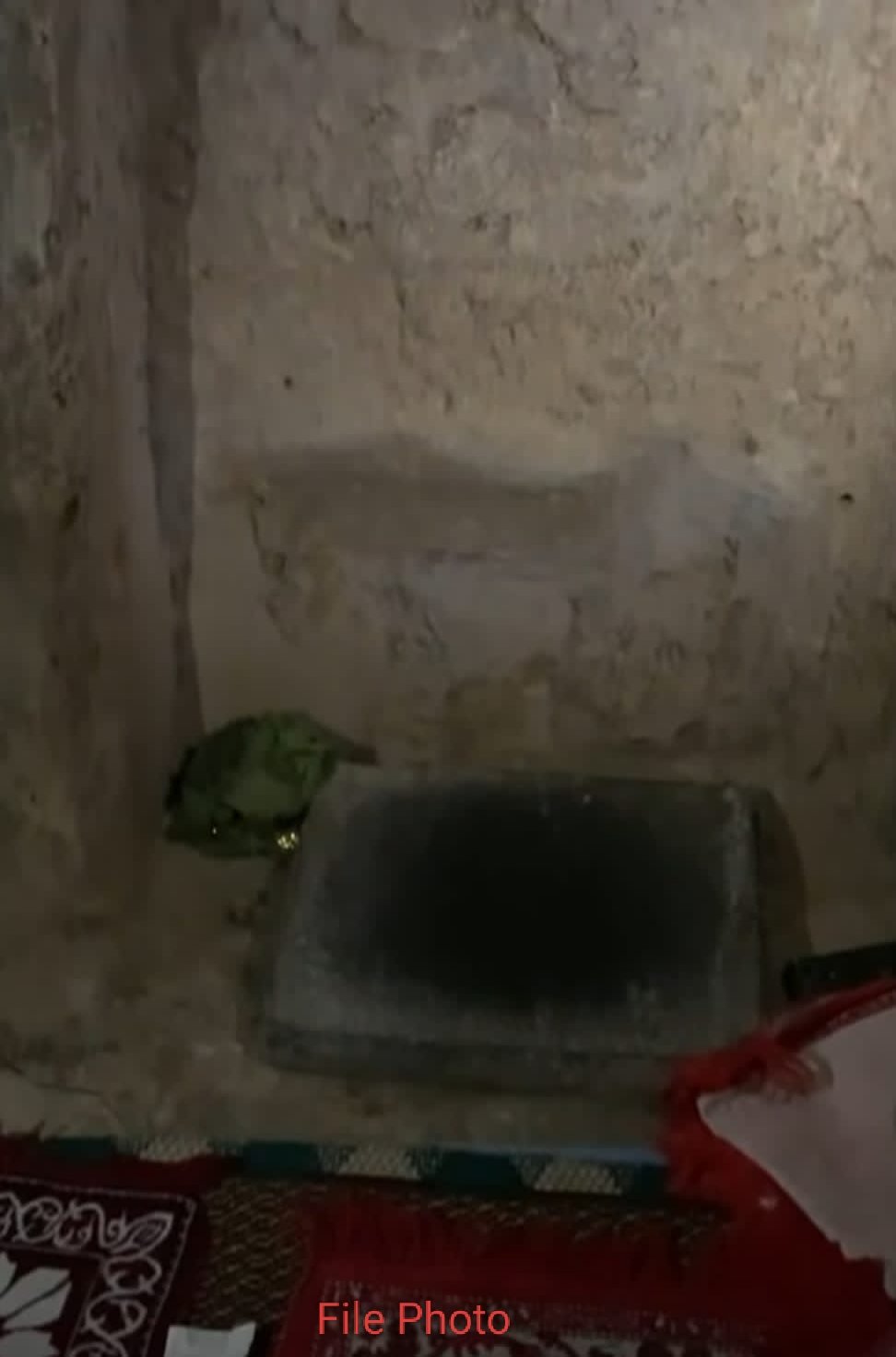Diplomat Special Correspondent
Srinagar, (DD): Nestled amid the lush willow groves of Soura, on the northern banks of Dal Lake, lies a modest rock‑hewn cave that has drawn devotees and seekers for over seven centuries. Known locally as Sheikh ul Alam’s Cave, this unassuming hollow is believed to have been the meditation chamber of Sheikh Noor‑ud‑Din, better known as Sheikh ul Alam or Nund Rishi (c. 1377–1440), the revered patron saint of Kashmir.
A Place of Solitude and Contemplation
Carved into the soft limestone of the gentle slope below the Hazratbal ridge, the cave measures barely 3 metres in length and 2 metres in height. Yet, within its cool, shadowed interior, the air seems to vibrate with the poet‑saint’s timeless couplets: “Through humility one attains pride, Through surrender the soul is glorified.”
Locals say Sheikh ul Alam would retreat here for days on end, subsisting on simple bread and wild herbs, composing verses that blended Islamic mysticism with Kashmiri folk wisdom. His teachings—emphasising tolerance, social justice and harmony with nature—laid the foundations of the distinctive Rishi order that continues to shape Kashmiri identity.
Historical Context
Born into a family of Sunni Muslim traders in the village of Qaimoh, Sheikh ul Alam was drawn to the ascetic life early on. After pilgrimage to Mecca and travels through Central Asia, he returned to Kashmir, establishing hermitages across the Valley. His most famous shrine stands in Charar‑e‑Sharief, but it is at Soura that he spent his final years, caring for the sick and composing his mystical poetry.
Over the centuries, the cave has endured natural erosion and human neglect. In the 1980s, a small retaining wall was built to prevent collapse, and in recent years the Jammu & Kashmir Academy of Art, Culture and Languages undertook modest conservation work—installing a low‑wattage lamp and laying a stone pathway for pilgrims.
Pilgrims and Passers‑by
On a bright spring morning, Gulzar Ahmad, a daily‑wage gardener from nearby Hazratbal, pauses at the cave entrance. “My grandfather told me tales of Sheikh ul Alam’s miracles,” he says, running a hand over the smooth rock. “I come here every Thursday to read his verses and pray for my family’s health.”
Across the path, a group of university students from Aligarh Muslim University are photographing the site. “It’s amazing how such a small cave can hold so much history,” remarks Sara Khan, a postgraduate in Urdu literature. “Standing here, you feel connected to centuries of devotion.”
Local Voices
Peerzada Bashir, caretaker of the cave and custodian of the adjacent small mosque, explains that they open the cave at dawn and that devotees leave chadar (sacred cloth) and flowers on the rock ledge. He notes that it is a simple shrine—no grand domes or minarets—but the peace there is profound.
Ayesha Raina, owner of a tea stall opposite the pathway, adds that on Fridays and Urs (anniversary) days, the footfall doubles. People come from Sopore, Bandipora—even from Jammu. They sip kahwa (green tea), share stories of Sheikh ul Alam, and leave feeling calmer.
Conservation and Tourism
Recognising its cultural value, the Jammu & Kashmir Tourism Department has proposed a heritage walk linking Sheikh ul Alam’s cave with the Hazratbal Shrine and Chashme Shahi gardens. Imran Nazir, a department official, says their aim is to promote responsible tourism by installing interpretative panels in English, Urdu and Kashmiri, and training local guides to narrate the saint’s life and teachings.
However, locals caution against over‑commercialisation. Peerzada Bashir insists that it must remain a place of devotion and warns that if too many shops and banners appear, the sanctity will be lost.
A Living Legacy
As the afternoon sun filters through willow branches, visitors drift away, leaving behind petals and whispered prayers. In its quiet simplicity, Sheikh ul Alam’s cave continues to embody the saint’s message of inner reflection, social equality and respect for all faiths—a heritage as vital today as it was in the 15th century.(DD)





